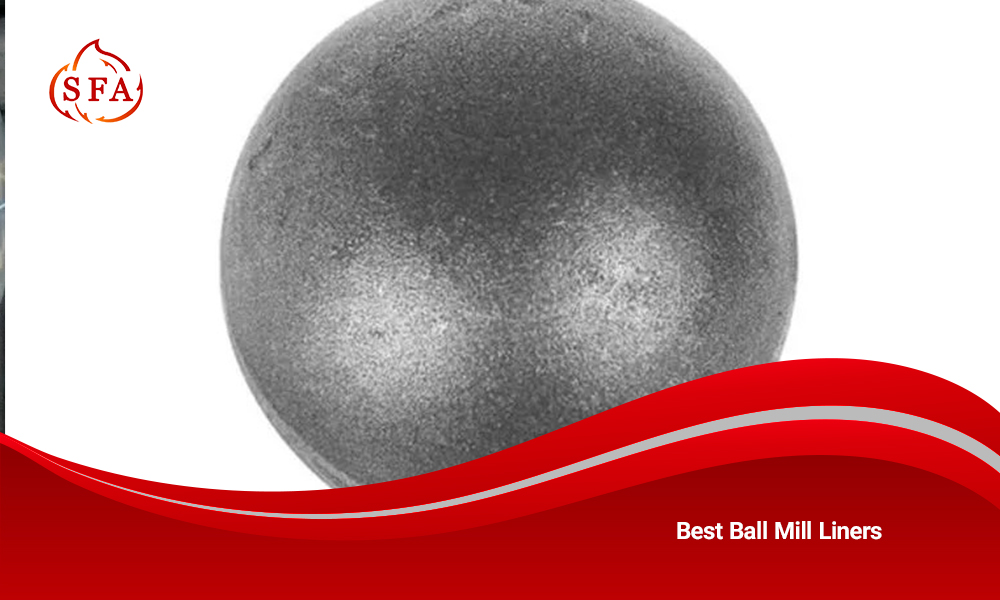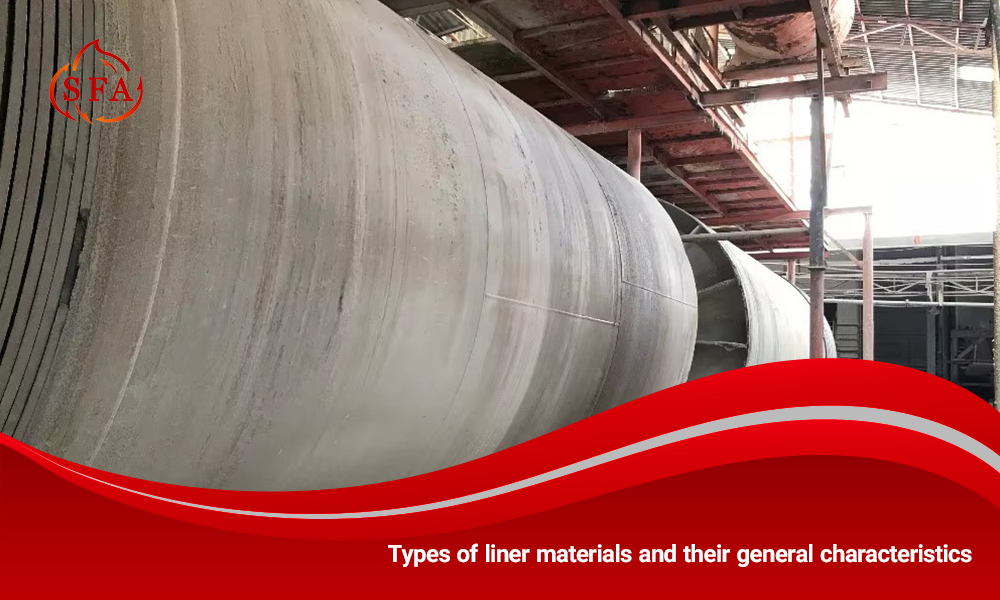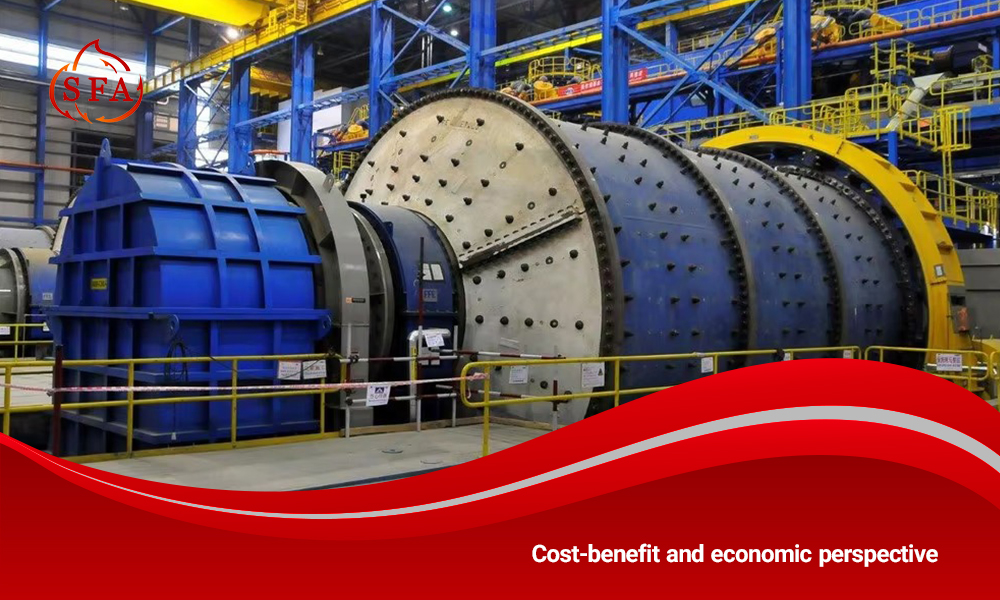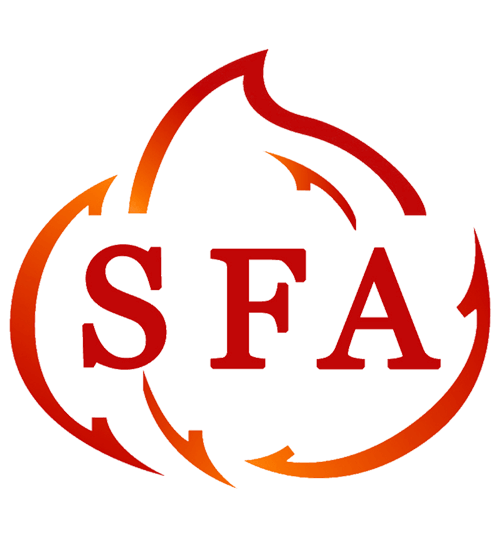

Choosing the Best Ball Mill Liners for Maximum Efficiency
Choosing the right liner for your ball mill is a key decision that will impact the performance, maintenance costs and energy consumption of your mill. A good liner will optimize the grinding process, reduce wear on parts and prevent unexpected stops and additional costs. On the other hand, an incorrect material selection or geometric design can reduce capacity, increase energy consumption and cause problems such as clogging or uneven wear.
In the continuation of this article from the website of Atashgah Sepahan Steel Foundry Industries, we intend to systematically examine the topic of Best Ball Mill Liners liner selection criteria based on the nature of the feed and working conditions, material comparison and advantages/disadvantages of each, geometric design principles of the liner and lifter profile, installation and maintenance methods to increase life, and finally practical solutions to increase efficiency and reduce life cycle costs.
Why is it important to choose the right liner in a mill?
The liner is the innermost protector and at the same time the determining factor for the movement of the abrasive media (ball/charge) inside the grinding cylinder. A proper choice from a practical point of view makes:
- The mill shell and components retain their useful life.
- Optimized media movement improves crushing efficiency.
- Reduced energy consumption lowers operating costs.
- Fewer sudden failures and unplanned shutdowns enhance reliability.
These points have a direct impact on the overall efficiency of the plant; therefore, choosing the “Best Ball Mill Liners” goes beyond a simple cost consideration and can significantly change the profitability of the process. (For design principles and the effect of liners on flow and grinding behavior, refer to technical studies and design guides).
Types of liner materials and their general characteristics
In practice, liners are made of different materials, each suitable for specific conditions. The most important categories are:


1. Alloy steel / High chromium
- Suitable for conditions where there is severe impact and wear.
- Good resistance to cracking and bending; suitable for parts requiring high hardness and strength.
- Recommended for large mills and hard feeds.
2. High manganese steel — Mn
- It has work-hardening capacity, meaning its hardness and wear resistance increase under surface stress.
- Suitable for high impact and moderate wear applications.
- One of its important advantages over hardened, chrome-plated steel is that its surface becomes “optimized” over time, and with continued use, the performance of the grinder improves, without the need for frequent replacement.
3. Rubber liners
- Better shock absorption, noise reduction, low weight and quick installation are some of the advantages.
- Used in small to medium mills and where there is a need to reduce plant noise and protect the shell.
- In cases of very abrasive feedstocks, it sometimes has a shorter life than metal, but the advantage of reducing energy consumption is significant.
4. Composite liners
- Composite liners are a combination of flexible rubber and hard metal parts and are designed to offer the benefits of both materials. This means that the rubber part of the liner absorbs the impact of the bullets and the energy they generate, reducing noise and pressure on the mill shell, while the metal part creates high-strength points to protect against wear and tear.
- This combination gives the composite liner a longer service life and more balanced performance than all-metal or all-rubber liners.
5. Ceramics and Special Materials
- Industries use these liners in special conditions that require minimal metal contamination or very high operating temperatures. When the final product must remain free of metal particles or the grinding process runs at high temperatures, ceramic liners or special alloys provide the best solution.
- Ceramic liners usually have very high wear resistance and are very durable against severe corrosion and erosion. This feature allows the mill to maintain stable performance even in harsh conditions and very abrasive feeds.
- The use of these materials, in addition to maintaining product quality, also reduces liner maintenance and replacement costs, because ceramics and special alloys have a longer life than metal or rubber liners.
Click to read the article «How to Reduce Costs with Forged Steel Balls».
Key Criteria for Selecting the “Best Ball Mill Liners”
Selecting the best liner is not a “one-dimensional” task; several criteria must be considered simultaneously:
- Nature and hardness of the feedstock (ore/charge): The harder and more abrasive the feedstock, the greater the need for more resistant liners (e.g. alloy/chromium or Mn steel).
- Mill size and shape, operating speed and circuit type (open/closed): For SAG/AG or Ball mills, the difference in liner profile and lifter height is of great importance
- Feed moisture and adhesion conditions: Wet feeds may require liners with special surfaces to prevent clogging.
- Maintenance costs and downtime: Some liners have a low initial cost but require frequent replacement; The economic criterion should be Life-cycle Cost
- Liner weight and its effect on energy consumption: A lighter liner (such as rubber or composite) can lead to reduced energy consumption and lower dynamic load on the bearings.
Liner design and profile — important technical points
The liner geometry, including the lifter height, the distance between the lifters, the shape of the wave or step, and the slope of the liner end, play a very important role in the trajectory of the balls and, consequently, the type and quality of the grinding. Some key points in this regard are:
1. Lifter height
The lifters must lift the balls sufficiently to create the impact energy necessary for grinding. If the lifter is too high, friction and unnecessary wear will increase and energy consumption will increase.
2. Lifter spacing and pattern
The distance between the lifters must be adjusted so that the balls can have a proper launch and bounce. If the distance is too large, the balls will not get enough energy for grinding and the process will be weak. Conversely, a distance that is too small will increase friction and consume more energy. The exact values of this distance vary depending on the type of mill and the size of the pellets and are usually determined with the help of simulations and practical experience.
3. Use of grate or outlet plates
In mills with a grate-type discharge system, the shape of the liners and outlet grooves must be matched to the size of the pellets and the final granulation objective. This ensures a smooth and efficient flow of material and minimizes clogging of the outlet path.
Practical solutions to increase liner life and productivity
- Feed Inspection and Selection of the Right Material: Before selecting a liner, sampling should be done and the hardness and abrasion of the material should be examined. The results of these tests will determine which material will be most effective.
- Bullet Trajectory Simulation: Using software such as DEM or CAD, it is possible to predict which liner shape will generate more impact energy and optimize bullet distribution. This minimizes the cost of trial and error.
- Continuous Monitoring and Preventive Maintenance: Measuring and recording the liner thickness at specific intervals helps to identify wear patterns and determine when to replace the liner in a timely manner without serious damage.
- Importance of Correct Installation: Many early failures are caused by incorrect installation. Full training of the installation team, use of standard screws and bolts, and adherence to the correct torque when tightening play an important role in the life of the liner.
- Use of a combination of materials: In some applications where both shock absorption and abrasion resistance are important, composite liners can be used; these liners are a combination of rubber and reinforced metal sections, providing a good balance between durability and performance.
Cost-benefit and economic perspective (Life-cycle Cost)
The initial price of the liner is only one parameter. To select the “Best Ball Mill Liners”, you need to consider:
- Installation cost and associated downtime,
- Expected life and replacement cost,
- Impact on energy consumption and grinding efficiency,
- Cost of repairs to the shell and other components,
In many cases, a liner with a higher initial cost but a longer life and positive impact on efficiency can be more economical in the long run. Studies and reports from equipment vendors and consultants confirm this.


Sepahan Atashgah Steel Foundry (SFA) — Manufacturer of liners and related components
Our company, Atashgah Sepahan Steel Foundry, has been operating in the foundry industry for more than 30 years and has gained valuable experience in producing various types of steel, cast iron and industrial parts. Industries such as mining, steel, cement, and copper widely use our products, which meet a significant portion of their needs.
Our complex features seven advanced furnaces, each capable of melting up to 20,000 kilograms simultaneously. Our production area spans 25,000 square meters, giving us an annual capacity of 25,000 tons of various casting parts. We dedicate part of this capacity to producing specialized liners and wear-resistant mill linings for mining industries and large factories.
One of our prides is our presence in international markets. In recent years, we exported our products to countries in the Middle East and Europe, maintaining compliance with global standards and ensuring reliable quality.
The management of this complex is carried out by Engineer Mohsen Ahmadi , who leads the company with an innovative approach and strategic planning. Alongside him, our management team includes Engineer Hamed Ahmadi (Acting CEO) and Engineer Ahmad Ahmadi (Commercial Manager), who play an important role in advancing the company’s goals with their experience and expertise.
Conclusion
Selecting the Best Ball Mill Liners requires a combination of engineering knowledge, real-world data from feed and mill performance, and economic calculations. In summary:
Start by accurately determining the feed specifications and production goals.
Choose the appropriate material (alloy steel, Mn, rubber, or composite) according to hardness, abrasion, and project conditions.
Optimize the liner geometry using simulation, adjusting lifter height, pattern, and slope.
Focus on the life-cycle cost rather than only the initial price.
Maximize liner life and mill productivity through continuous wear monitoring and scheduled maintenance.
If you seek a supplier with high production capacity, export experience, and a well-equipped line for liners or related castings, consider Atashgah Sepahan Steel Foundry Industries. The company operates seven kilns, exports to the Middle East and Europe, and introduces its management team on its website.


